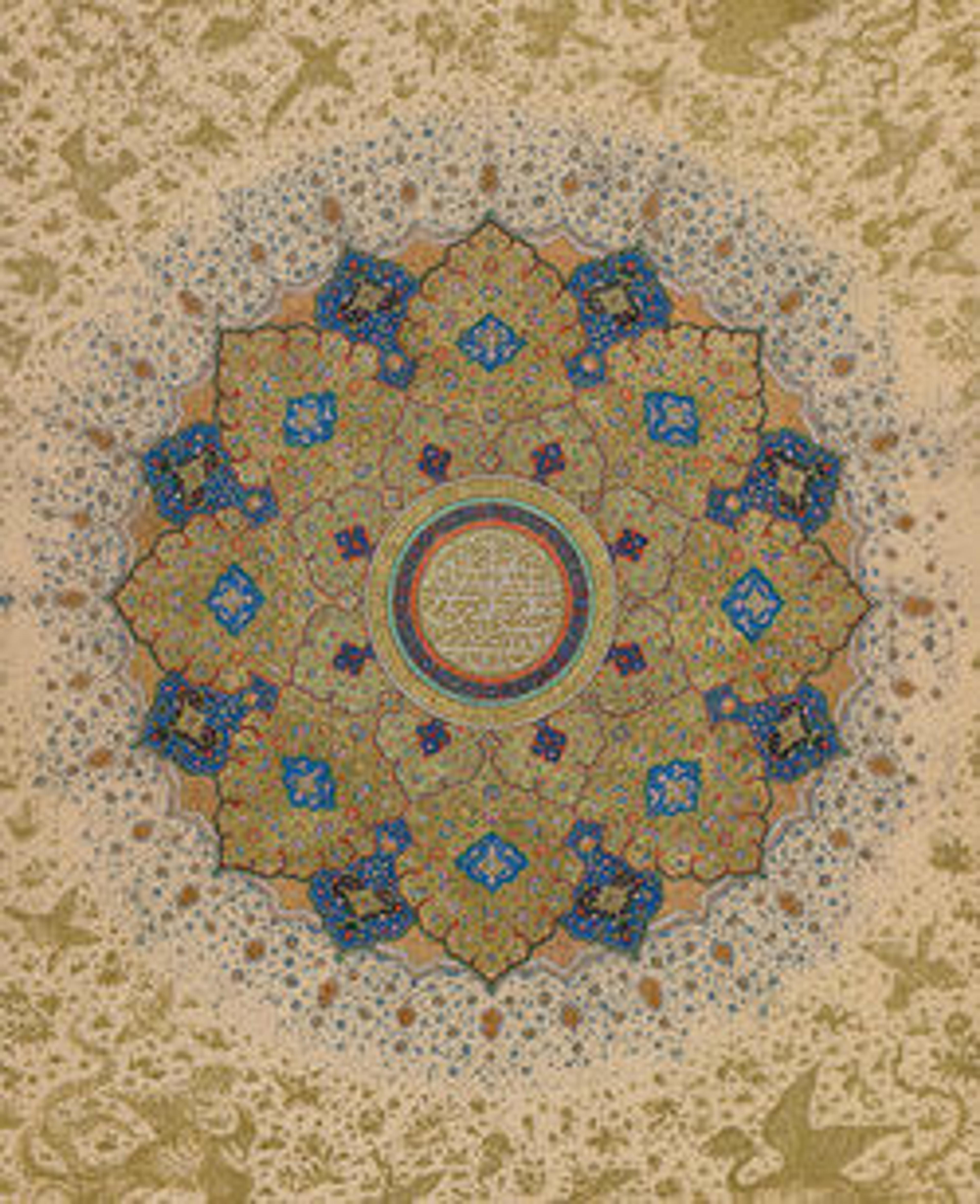Section from a Qur'an Manuscript
This fragment of a page comes from one of the largest copies of the Qur'an ever produced. Each line of script, written in the muhaqqaq style, is over three feet long, and each page was originally over seven feet tall. This page probably comes from a gigantic Qur'an that the calligrapher 'Umar Aqta' wrote for the ruler Timur (Tamerlane, d. 1405). Apparently Timur was unimpressed after 'Umar Aqta' wrote a Qur'an so small that it could fit under a signet ring, so the calligrapher wrote another Qur'an so large it had to be brought to Timur on a cart.
Artwork Details
- Title:Section from a Qur'an Manuscript
- Calligrapher:`Umar Aqta'
- Date:late 14th–early 15th century (before 1405)
- Geography:Attributed to present-day Uzbekistan, Samarqand
- Medium:Ink, opaque watercolor, and gold on paper
- Dimensions:Page: Ht. 28 3/4 in. (73.0 cm)
W. 42 in. (106.7 cm)
Frame: Ht. 79 1/2 in. (201.9cm)
W. 55 in. (139.7 cm)
D. 3 1/4 in. (8.3 cm) - Classification:Codices
- Credit Line:Rogers Fund, 1921
- Object Number:21.26.13
- Curatorial Department: Islamic Art
More Artwork
Research Resources
The Met provides unparalleled resources for research and welcomes an international community of students and scholars. The Met's Open Access API is where creators and researchers can connect to the The Met collection. Open Access data and public domain images are available for unrestricted commercial and noncommercial use without permission or fee.
To request images under copyright and other restrictions, please use this Image Request form.
Feedback
We continue to research and examine historical and cultural context for objects in The Met collection. If you have comments or questions about this object record, please contact us using the form below. The Museum looks forward to receiving your comments.
